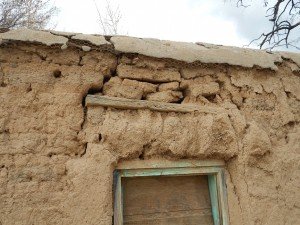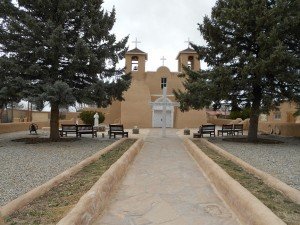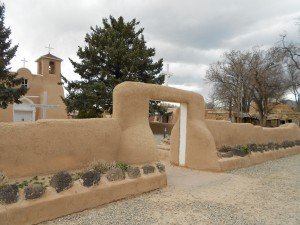The Spanish Missions of New Mexico
Early New Mexico history is the history of Spanish exploration and colonization during the 1600’s. Today, the missions of New Mexico, just like the ones in California, tell a story of the regions earliest settlement and colonization. When the Spain colonized the southwest the missions were, for most intents and purposes, on an equal footing with the military. The effort to convert the Native population to Christianity was key in trying to secure a territory.

The Spaniards had colonized New Mexico (Nuevo Mexico) long before California, which they referred to as Alta California. Santa Fe was established in 1610. Initially, churches were built during that time up until the Pueblo Revolt of 1680. As a result, the Spaniards were driven out of New Mexico and not returning for twelve years. During their absence, most of the missions built were destroyed by the Pueblo Indians.
The Pueblo revolt was blamed mostly on the strict rules laid down by the early Spanish friars on the pueblo Indians. The forced building of churches, often times on the very ground that the Natives had earlier worshiped on. Also, strict punishment for those caught practicing their native spirit religion
San Francisco de Asis
One historic site you’ll want to visit if your western road trip takes you to northern New Mexico is the San Francisco de Asis Mission. This old mission church built circa 1772 is located in Rancho de Taos New Mexico, just four miles south of the Taos plaza and just east of NM 68.

San Francisco de Asis was built of adobe and featured twin bell towers and an arched portal entrance overlooking a courtyard. The church is over 160 feet long, 25 feet high and 90 feet wide. The church has a French style altar, retablos and altar screen completed by the finest santeros in New Mexico.
Both Taos and Rancho de Taos is a showcase of natural beauty with ancient roots. The site of this mission was declared a National Historic Landmark in 1970. The church was also designated a World Heritage Church.There are 890 sites around the world who share this designation.
This old Spanish Mission church is a piece of living history and it’s a must stop when visiting the Taos area. Many people claim that San Francisco de Asis Mission is the most photographed and painted church in the country. New Mexico’s well known artist Georgia O’Keeffe made four paintings of the church alone. The church was also photographed by Ansel Adams. The church today is an active parish.

Surrounding the church are shops, galleries, trading posts, and restaurants. The north end of the scenic by-way, The High Road to Taos, comes out at Rancho de Taos.The High Road to Taos is a terrifically scenic drive that begins north of Santa Fe and winds itself through small villages filled with art galleries of local artisans, unique shops and restaurants. This is another excellent activity to add to your northern New Mexico vacation planner.
The Shadow of the Cross Painting
Of special interest inside San Francisco de Asis church is the painting The Shadow of the Cross by French-Canadian artist Henri Ault.
A phenomenom of this painting when viewed by some occur in darkness. When in darkness the clouds surrounding Jesus begin to glow and the silhouette of Jesus becomes three dimensional. His robe also begins to billow in the breeze and some see a halo over his head. The Catholic Church itself does not make any official explanation as to why people experience what they do when viewing The Shadow of the Cross. The church has not referred to this experience as a miracle but merely something that as of now is not understood.

There is a story that years ago scientists from the nearby Los Alamos laboratory tested the painting for the presence of phosphorescent minerals or even radioactivity and that their tests came back negative. Henri Ault always had denied that he did anything to the painting to cause these effects and this phenomenom is not thought to be present in any of his other work.
While there have never been claims of healing attributed to The Shadow of the Cross painting, many people have had emotional reactions to it’s viewing.
Two additional Trips Into History articles you may enjoy are on the links below…
Driving the Los Caminos Antiguos Scenic Byway
The Santa Fe Railroad and Santa Fe

Renovation
As with all original adobe structures they deteriorate over time and San Francisco de Asis is no exception. To help preserve the church a cement coating was added during the 1960’s. Unfortunately, the cement coating didn’t allow the natural materials original to the church to breathe and expand. Cracks resulted and by 1979 the structure itself became unstable.As a result portions of the adobe walls and buttressing were replaced. Today, to keep San Francisco de Asis in top condition an annual remudding takes place. Each year several coats of mud from south of town are applied to the exterior and this natural type of restoration works well to protect the structure from the elements.
San Francisco de Asis is a very unique New Mexico Spanish mission and is a must stop when visiting northern New Mexico.
(Article and photos copyright 2014 Trips Into History)
